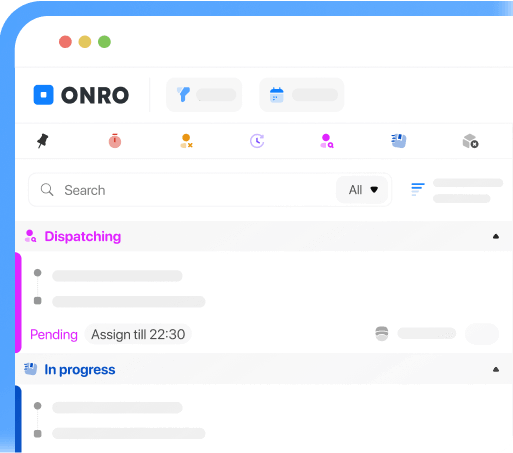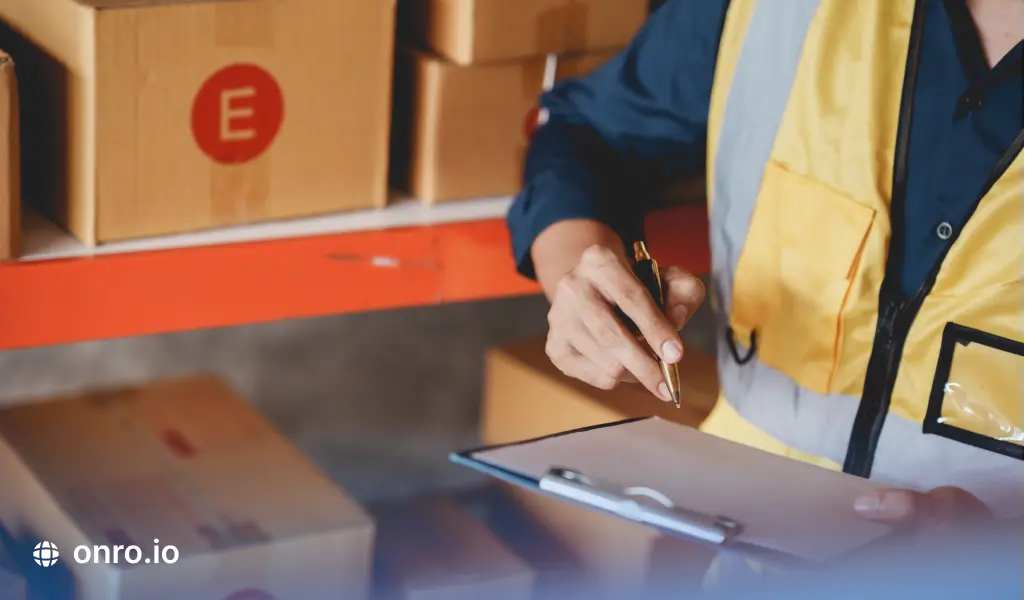Are you wondering, “What is 4PL logistics?” 4PL logistics is defined as the entire supply chain process managed by various integration logistics providers through third parties. It provides end-to-end fulfillment and optimization in inventory management, order fulfillment, and procurement. In this post, you can read about differentiating between 3PL for small business and 4PL, the advantages of 4PL logistics, and successful scenarios.
| Aspect | 3PL | 4PL |
|---|---|---|
| Supply Chain Role | Provides specific logistics services. | Manages the entire supply chain and coordinates 3PLs. |
| Asset Ownership | Owns or operates logistics assets. | Non-asset-based; focuses on strategy and optimization. |
| Control | Offers flexibility but requires managing multiple providers. | Centralized control with one point of contact. |
| Cost Efficiency | Can be less cost-effective due to multiple contracts. | Potentially more efficient, though end-to-end services are pricier. |
| Technology | Basic systems for logistics management. | Advanced technology (AI, machine learning, blockchain). |
| Scalability | Suitable for small to mid-sized businesses. | Highly scalable for large, complex logistics needs. |
| Customization | Standard logistics services. | Tailored end-to-end supply chain solutions. |
Table 1. difference between 3PL and 4PL
Try Onro for Free
Get your free access to the Onro All-in-one 3PL Software.
What is 4PL Logistics?
While outsourcing a complete logistics service, an organization moves beyond being a third-party logistics provider into the realm of a fourth-party logistics provider. In fact, a 4PL is an end-to-end fulfillment warehouse that looks after the whole value chain of logistics for a business.
“Control tower” over 3PL processes; a 4PL serves as a project manager for logistics solutions across the supply chain network, from inventory to order fulfillment, reverse logistics, procurement, and sourcing to overcome logistics challenges.
The main models of 4PL:
- Multiple third-party logistics services form a unified whole as a 4PL network.
- An independently operating 4PL manages all the warehouse nodes in the supply chain in a completely independent relationship with no other entity.
Benefits and Disadvantages of Using 4PL
Benefits of Using 4PL
- All-in-one supervision: 4PL manages the entire supply chain to streamline and effectively the logistics flow.
- Cost-effective: A single enterprise is the contact point for lower costs to avoid negotiating and managing more than one partner for their logistics.
- Optimized Solutions: Past data might be used to forecast customer demand, and 4PL services have improved logistics more efficiently.
- Integrated Services: The logistics functions of inventory management, order fulfillment, and customer communications are fully integrated, around which further efficiencies can be designed.
Disadvantages of Using 4PL
- Less Control: Companies may not control some aspects of the supply chain because 4PL holds total blanket coverage on a function.
- Higher Possibility of Additional Costs: Although all-encompassing, using complete end-to-end logistics services for 3PL will generally be costlier than resorting to independent 3PLs for one or multiple services.
- Dependence: It is vulnerable to putting all its eggs into a single basket as the company relies on just one logistics provider for all its logistics services, but this 4PL provider may cause operational issues.
Difference Between 3PL and 4PL
1. Level of Supply Chain Involvement
Supply chain involvement is the main distinction between 3PL and 4PL. 3PLs are logistics service providers for freight forwarding, warehousing, and transportation, acting as intermediaries between the seller and end consumer. They typically handle different stages of logistics, including first-mile, middle mile, and last-mile logistics.
In contrast, 4PLs manage the entire supply chain, harmonizing various 3PLs to unite logistics operations coherently. To summarize, a 4PL manages the logistics process end to end and provides one point of contact for clients.
2. Asset Ownership
The 3PLs typically own or operate physical logistics assets like warehouses, trucking fleets, or storage. While most 4PLs are non-asset-based, they do not own logistics and physical infrastructure.
4PLs usually provide strategic know-how, software systems, and fulfillment software to practice advanced logistics processing. They study data to figure out optimization options, whereas they rely mainly on 3PLs or other service providers for the infrastructure and assets.
3. Role in Logistics Operations
A 4PL logistics provider is the party that organizes and manages third-party logistics companies inside the logistics network to effect harmonious cooperation among all logistical players.
Unlike a standard enterprise that may hire a single 3PL for different logistics jobs like warehousing or fulfillment, a 4PL organizes and integrates these services. For example, if one 3PL warehouse exceeds its capacity, the 4PL will ensure that other 3PLs that can meet this demand will assist.
4. Expansion and Scalability
Thanks to 4PL systems, logistics service providers can face obstacles from warehouse real estate markets. With its set of different 3PLs, the 4PL can provide cheap elevation and regionally effective demand fulfillment. This integrated philosophy provides scalability for logistics operations.
Moreover, the collaboration of 4PLs and 3PLs will have some consequences for both—they will handle volume better, gain efficiency in service delivery, and achieve a larger coverage area.
4PL Logistics: An Industry-Specific Tool
Some industries require a lot from 4PL services based on their specific needs:
- Medical Sector: In this domain, timely delivery of quality products is crucial. By coordinating and collaborating with various entities, 4PL aligns the logistics with all regulatory requirements.
- Field Service Industry: This industry may likely be characterized by quick responses. Through real-time inventory tracking and customer communications management, 4PLs ensure smooth and effective service delivery.
- E-Commerce Delivery Management Platforms: Fast-moving e-commerce houses are well advised to depend on the services provided by a strong 4PL that can flexibly expand with them to support their endeavor to keep packing and shipping orders and keeping up with customer expectations.
Technology and Its Role in Shipping and 4PL
Technological advancement plays a significant role in the addition of 4PL services. The modern supply chain is built about this point, with a single pulley. Hereunder are some of the areas whereby technology dictates the way that it enables service provision to its customers in 4PL:
- Apt Tracking of Inventory Real-Time Technology: It helps 4PLs acquire visibility into their inventories, enabling on-time delivery and consolidation of inventory into a smooth flow.
- Order Fulfillment Optimization: Order management is fully optimized by technology to enable faster and more timely allocation of shipments.
- Historic Data-Based Demand Forecasting: Demand forecasting based on historical data indicators will provide customer demand forecasting for their logistics strategy.
- Artificial Intelligence & Machine Learning: Value-added methods for predicting shipping costs for pricing and operation efficiency through machine learning and advanced artificial intelligence algorithms.
- Secure Blockchain Transactions: It secures and transmits transactions during the inventory life cycle. Services based on the link will thus ensure secure transactions and lessen risk for all trades.
- Digital Platforms and Integrative Tools: Such technologies would promote seamless cooperation between the 4PL provider, the company, and the internal team, thus prompting further increases in communication and efficiency.

3 Examples of Successful 4PL Providers
Some established 4PL players have given insight into what is possible with 4PL services being used to their full advantage in supply chain optimization.
1. Accenture
This is a sizable global consulting vehicle discussing a successful 4PL practice. They assist in integrating fragmented supply chains through analytics and deep industry capabilities while improving efficiency and reducing cost.
2. DHL Supply Chain
The synergy with a true leader in global logistics. DHL’s 4PL service offerings for end-to-end supply chain solutions complement DHL perfectly. DHL has also been successful in unraveling complicated logistics operations in various industries, from automotive to consumer goods.
3. Capgemini
The level of consulting and technology services has deserved its name almost forever, and now Capgemini has also entered the 4PL arena with its Smart Operations offering. 4PL services also involve digital innovation, whereby customers are given new ways to gain agility and visibility with respect to their supply chains.
3 Examples of Successful 4PL Implementations
The case studies provided by various organizations testify to the success achieved via the 4PL model in logistics.
1. Unilever
Unilever is a prime example. The company needed a 4PL provider that could link its supply chains across countries, which ultimately resulted in a 10% cut on transport costs and a 5% reduction in inventory holdings. This is practically everything about how well 4PL works.
2. Caterpillar
Operations extend across entire North America using established and provisioned 4PL sites for the distribution of parts with all these benefits of operational streamlining, early delivery, and enhanced services to customers. These examples illustrate the direct benefits of 4PL in operation for construction machinery businesses.
3. HP (Hewlett-Packard)
This made HP a 4PL to access a differentiated consumer electronics supply chain. This encourages the view from a central point and means resources are improved and better managed while introducing shipping time delays and increasing holding costs to respond more to market changes.
FAQ | 4PL Logistics
The 3PL operates singular logistics activities in warehousing and transportation, while the 4PL manages all supply chain activities within its scope and coordinates services with 3PLs.
The 4PL model reduces logistics costs with optimum operations across the service provider network rather than dividing these costs among several independent providers.
Though 4PL has excellent scalability, more prominent companies usually enjoy the commercial benefits more than small entrepreneurs as it revolves around heavier operational and logistics needs.
Conclusion
For optimizing logistics operations and enhancing efficiency while cost-effectively delivering advanced last-mile delivery solutions, Onro is the answer. Not really anything close to a full-blown 4PL provider, Onro’s delivery software aids companies in making decisions to optimize their logistics network. Get a free demo today and see for yourself how Onro can deliver excellence to your delivery operations!
Try Onro for Free
Get your free access to the Onro All-in-one 3PL Software.



